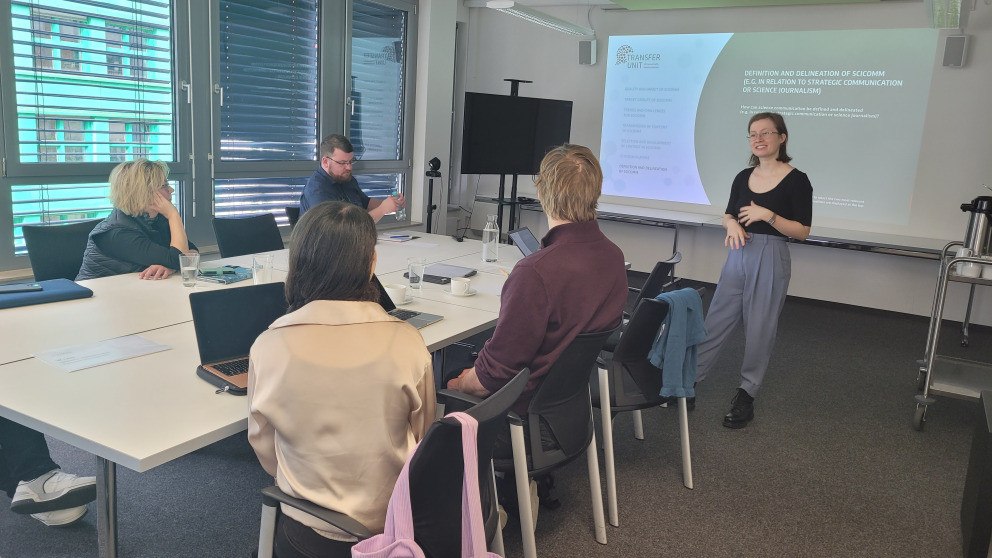Are We Getting Science Communication Right?
05.05.2023

Global challenges such as the Covid-19 pandemic and climate change have boosted interest in the findings of scientific research. Liliann Fischer, Head of Quality and Transfer at Wissenschaft im Dialog, and Philipp Prein, Head of Communications at Agora Verkehrswende, spoke with RIFS fellows and researchers in late April on building better dialogue between science, society and politics. Effective science communication should not be left to chance and requires input from communications experts, the participants agreed.
"This is the kind of chart that I make," explains Philipp Prein, holding up a bar graph with clearly labelled x- and y-axes. The fellows and researchers nod in understanding – creating and studying charts like this is part of their routine work. “But when it comes to public-facing communications, we turn to a graphic designer,” he continues, holding up an infographic on the introduction of limited speed zones in towns across Germany. The infographic shows a map spattered with colourful dots, with a 30 km/h speed limit sign beside it. Anyone glancing at the chart can easily identify which communities plan to introduce limited speed zones.
“The research community needs to recognize the value of good science communication. Science communication is usually treated as more of an incidental factor, when in fact it is vital that researchers know who they are writing for and speaking to and understand how dialogue works," explains Liliann Fischer, whose work focuses on improving researchers’ understanding of science communication and supporting its application in practice.
Since 2014, Wissenschaft im Dialog (WiD) has conducted an annual survey on the attitudes of the German public towards science and research. The 2022 Science Barometer shows clearly that public trust in research has remained relatively constant (approx. 60 per cent of respondents) over the last years, with a slight upward trend. The respondents were equally interested in research findings and scientific methods.
The question is: What can researchers do to communicate their findings – including statistics, mathematical formulas and insights into abstract causal relationships – in order for society to benefit from this knowledge?
Liliann Fischer identifies three levels of science communication: Information, dialogue, and participatory formats like citizen science. "It's important to find the right form for the content, the goals, and the target groups of your communications," she advises.
“When it comes to political communication, building bridges rather than polarizing is critical," explained Philipp Prein. “It is important that facts are presented in a way that will engage specific groups of decision-makers." Some formats can be successfully applied in communications to different groups. These include graphic novels, for example. However, these are costly to produce and thus more suitable for addressing overarching issues that will not require frequent updates.
RIFS fellows and researchers could benefit from trainings on specific aspects of science communication. How can research findings be translated into policy recommendations? How can researchers use social media effectively? What settings work for film formats? How can researchers add personality to their presentations without going overboard? Are there right and wrong target groups? “It is important that researchers learn to talk about what went wrong and why. Sessions focussed on sharing our experiences offer an opportunity to learn a lot from our own and others' mistakes," suggests Liliann Fischer.
Related links:
Science Barometer 2022: https://www.wissenschaft-im-dialog.de/en/our-projects/science-barometer/science-barometer-2022/
Limited speed zones in Germany: https://www.agora-verkehrswende.de/veroeffentlichungen/kommunen-fuer-tempo-30/
